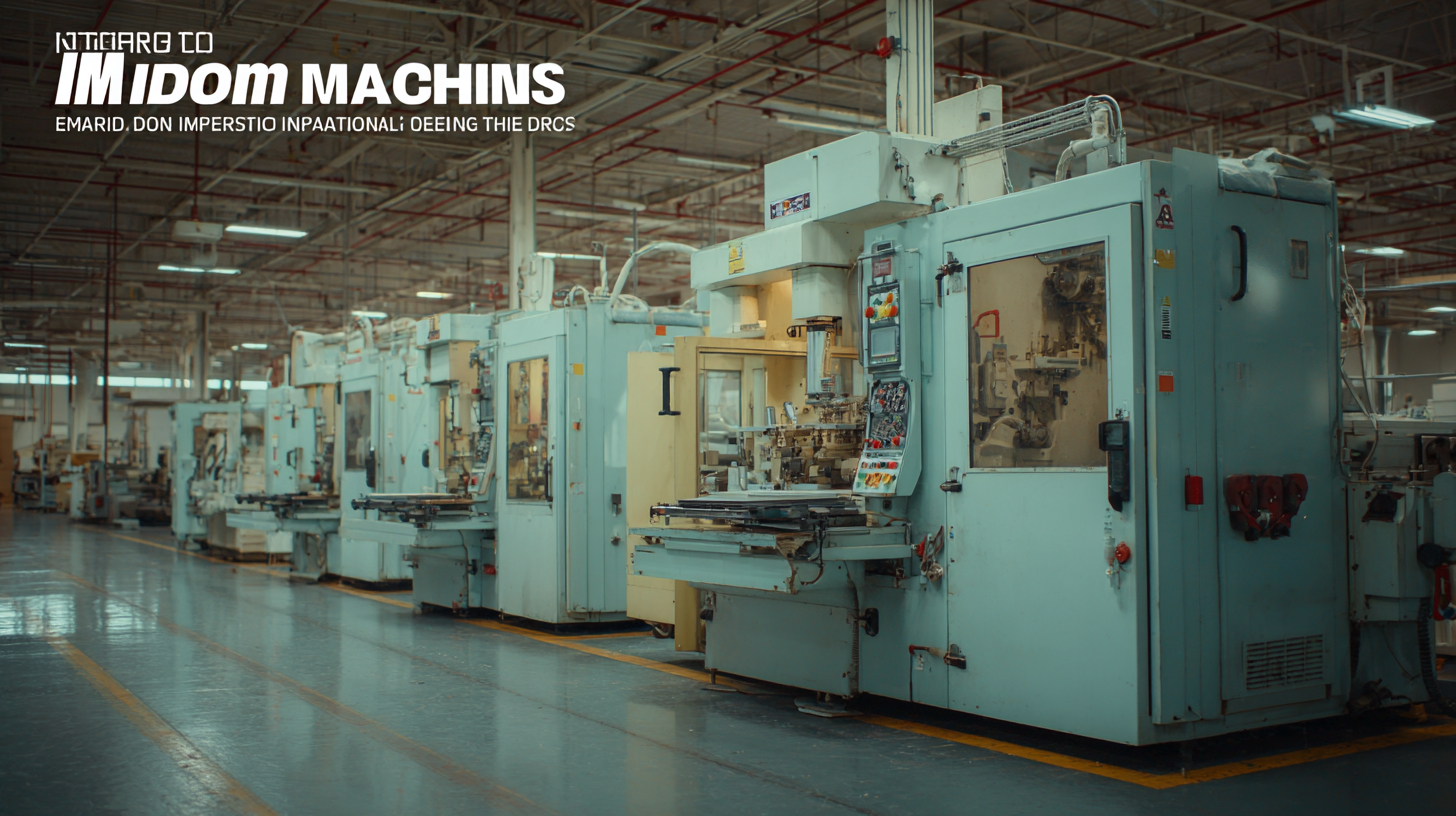Navigating Export and Import Certifications for Best Interior Door Machines in Global Trade
In the rapidly evolving landscape of global trade, the importance of navigating export and import certifications cannot be overstated, especially for manufacturers of Interior Door Machines. According to a report by Grand View Research, the global door manufacturing market is expected to reach USD 187.5 billion by 2027, underscoring the growing demand for high-quality interior doors and the machinery that produces them. As businesses scale their operations internationally, understanding the regulatory frameworks and ensuring compliance with international standards is crucial.

This blog will provide a comprehensive checklist for manufacturers and exporters of Interior Door Machines, detailing the necessary certifications and documentation required to streamline the trade process and enhance market credibility. By adhering to these guidelines, companies can not only mitigate risks associated with international shipping but also leverage their compliance as a competitive advantage in this lucrative market.
Understanding the Importance of Export and Import Certifications in Global Trade
In today's interconnected world, the significance of export and import certifications cannot be overstated, especially in the context of trading goods like interior door machines. These certifications serve as a crucial gatekeeping measure, ensuring that products meet specific regulatory standards and safety guidelines required in various markets. For manufacturers and exporters of interior door machines, obtaining the right certifications not only enhances credibility but also facilitates smoother transactions across borders. It assures buyers that the products they are purchasing conform to the necessary quality and safety standards, which is paramount in an era where consumer trust is pivotal.

Moreover, understanding the intricacies of these certifications can greatly influence a company's market strategy. Different regions may have unique certification processes that involve distinct documentation, testing, and compliance requirements. By investing time and resources in familiarizing themselves with the certification landscape, businesses can avoid costly delays and penalties, ultimately gaining a competitive edge. In global trade, where the stakes are high and the market dynamics constantly shift, the ability to navigate export and import certifications effectively is not just an operational necessity; it is a strategic advantage that can lead to sustained growth and success in the market.
Key Certifications for Interior Door Machines: What You Need to Know
When navigating the global market for interior door machines, understanding key certifications becomes essential for businesses aiming to remain compliant and competitive. The International Organization for Standardization (ISO) sets the benchmark for quality and safety standards, with ISO 9001 being particularly relevant. According to a 2022 market analysis by Research and Markets, companies with ISO certifications experience a 25% increase in customer satisfaction and retention. This is primarily due to the assurance that products meet international quality standards.
Another crucial certification is CE marking, which indicates compliance with EU safety, health, and environmental protection legislation. For example, interior door machines sold in the European market must not only meet CE requirements but also align with the Machinery Directive 2006/42/EC. Research has shown that products with CE marking can facilitate smoother entry into the EU market, where demand for high-quality interior solutions is projected to grow by 8% annually through 2025. By investing time and resources into acquiring these certifications, manufacturers can bolster their credibility and expand their reach in global trade.
Navigating Export and Import Certifications for Best Interior Door Machines
This chart illustrates the number of import certificates required for various key certifications relevant to interior door machines. Understanding these certifications is crucial for navigating global trade effectively.
Navigating Regional Regulations for Interior Door Machinery in International Markets
Navigating the landscape of regional regulations for interior door machinery is crucial for businesses engaged in global trade. As companies expand their operations internationally, understanding the specific compliance standards across different markets becomes paramount. Many regions have developed unique certification processes and environmental regulations that must be adhered to in order to successfully import or export machinery. This not only ensures legal compliance but also mitigates risks associated with fines and operational delays.
In light of growing geopolitical tensions and evolving trade policies, the ability to navigate these regulations can serve as a strategic advantage. For instance, as the European Union adopts a more geopolitical approach to economic regulations, manufacturers must closely monitor changes in compliance frameworks. Companies that proactively engage with these regional requirements can enhance their market positioning and build resilience against potential disruptions. Furthermore, the integration of sustainability practices into product offerings is increasingly becoming a requirement rather than an option, urging businesses to adopt a holistic approach toward regional compliance to remain competitive and responsible in international markets.
Strategies for Ensuring Compliance with Global Trade Standards
When engaging in global trade of interior door machines, ensuring compliance with international standards is paramount. The International Organization for Standardization (ISO) has established numerous guidelines that manufacturers must adhere to, significantly influencing product design and production practices. For instance, ISO 9001, a standard focused on quality management systems, notes that nearly 1 million organizations worldwide are certified, underscoring its importance in fostering trust with global partners.
Moreover, understanding export and import certifications can streamline the process and reduce delays. According to a report from the United Nations Conference on Trade and Development (UNCTAD), non-compliance can lead to significant financial penalties, with global exporters facing losses estimated at over $500 billion annually due to regulatory hurdles. Embracing strategies such as thorough market research and effective documentation practices not only mitigates these risks but also enhances competitiveness. Investing in compliance training for staff can further fortify a company’s position in the market, transforming regulatory requirements from a hurdle into a strategic advantage.
The Impact of Certifications on the Competitiveness of Chinese Manufacturing
 In the highly competitive landscape of global trade, certifications play a pivotal role in enhancing the competitiveness of Chinese manufacturing, particularly in the interior door machine sector. According to a report by the China Machinery Industry Federation, certifications can improve product credibility and open access to international markets, as 78% of overseas buyers consider certified products more reliable. This is especially crucial for manufacturers looking to penetrate Western markets, where compliance with international standards such as ISO and CE is often a prerequisite for entry.
In the highly competitive landscape of global trade, certifications play a pivotal role in enhancing the competitiveness of Chinese manufacturing, particularly in the interior door machine sector. According to a report by the China Machinery Industry Federation, certifications can improve product credibility and open access to international markets, as 78% of overseas buyers consider certified products more reliable. This is especially crucial for manufacturers looking to penetrate Western markets, where compliance with international standards such as ISO and CE is often a prerequisite for entry.
Furthermore, the rise of environmental consciousness among consumers has shifted the focus toward sustainable manufacturing practices. Data from the International Organization for Standardization indicates that products certified under eco-labeling schemes witness a 20% increase in marketability. For Chinese manufacturers of interior door machines, obtaining relevant certifications not only improves product quality but also aligns their offerings with global sustainability trends, ultimately leading to a competitive advantage. As the global demand for certified products continues to rise, those failing to adapt may find themselves at a significant disadvantage.
